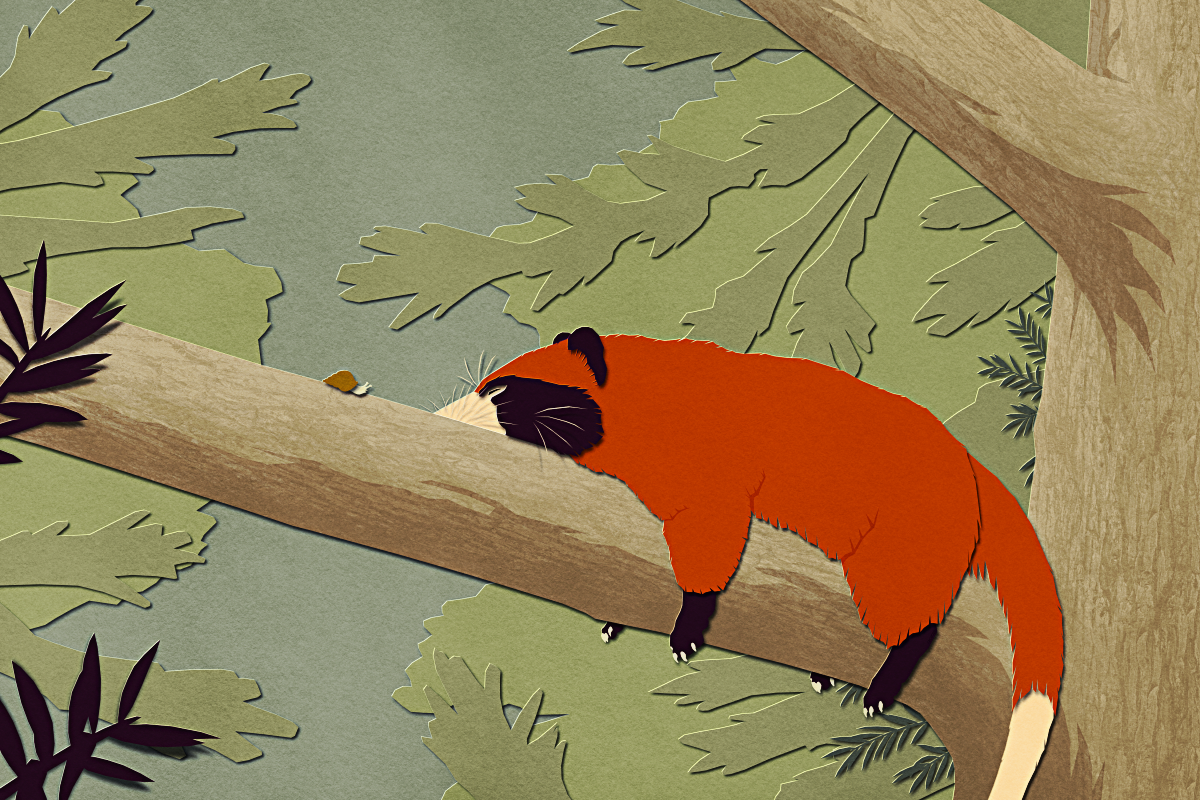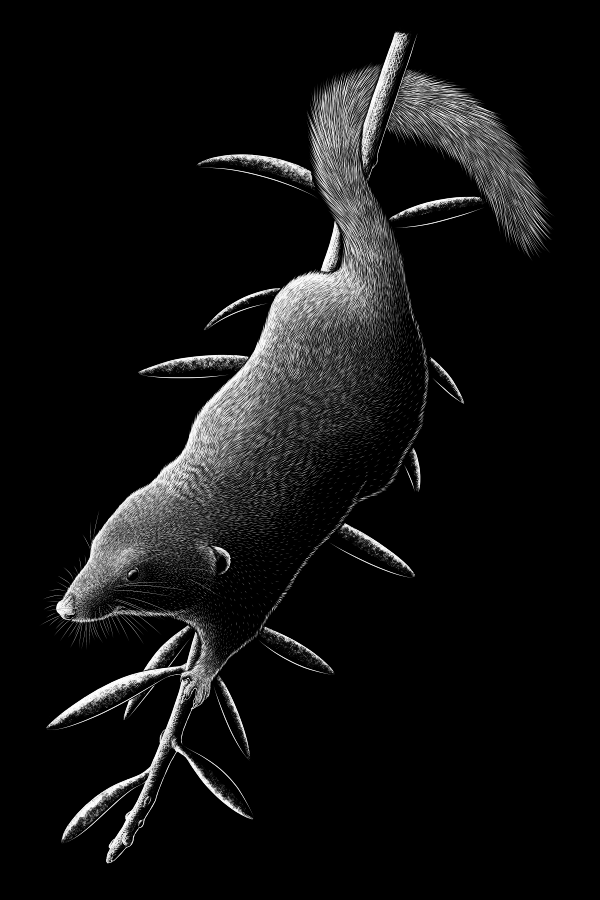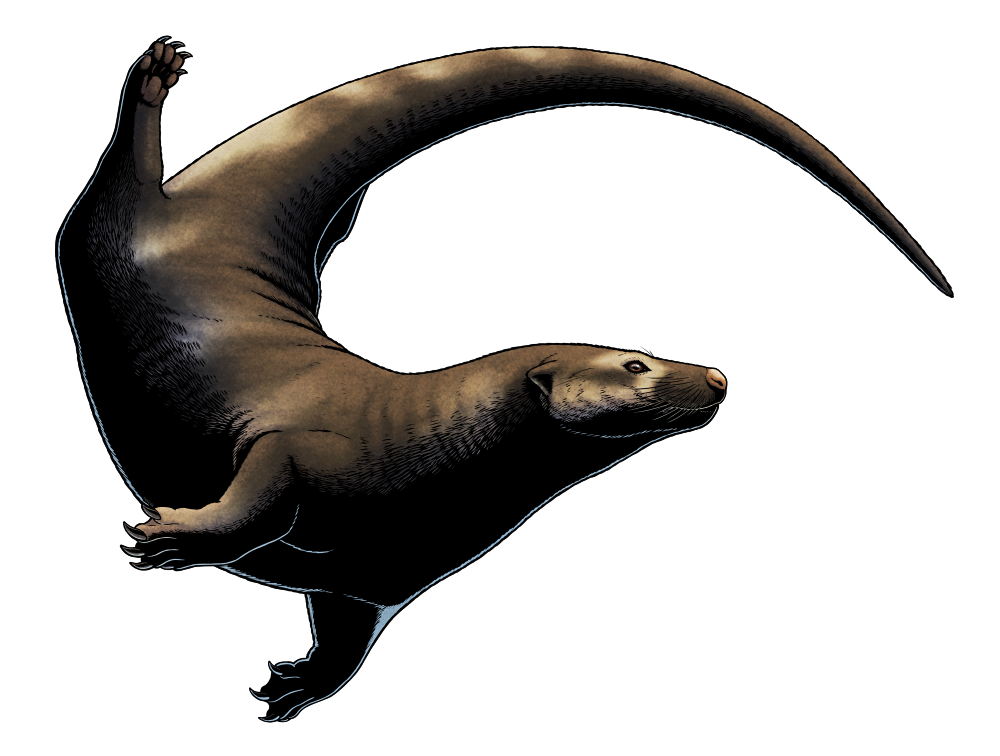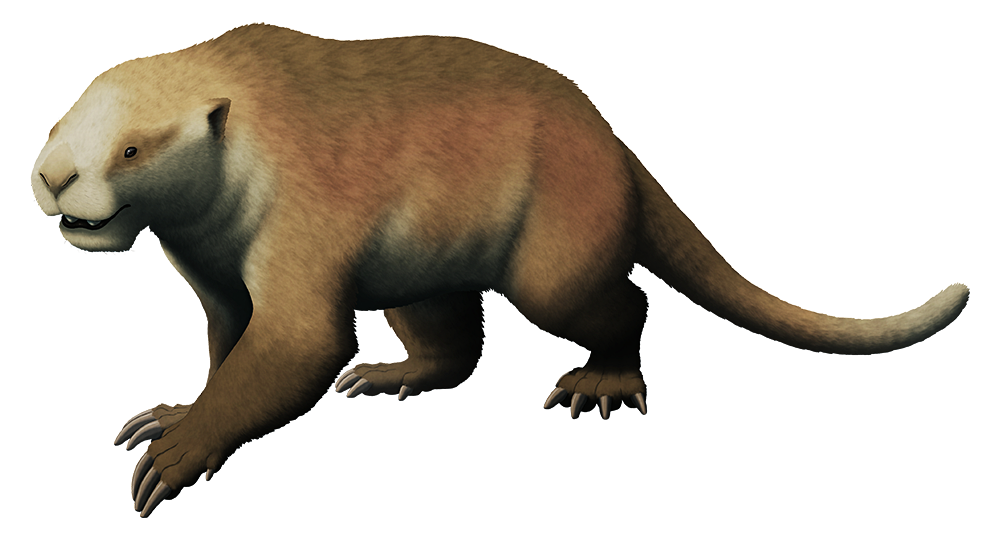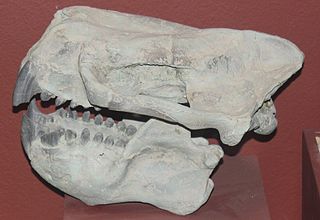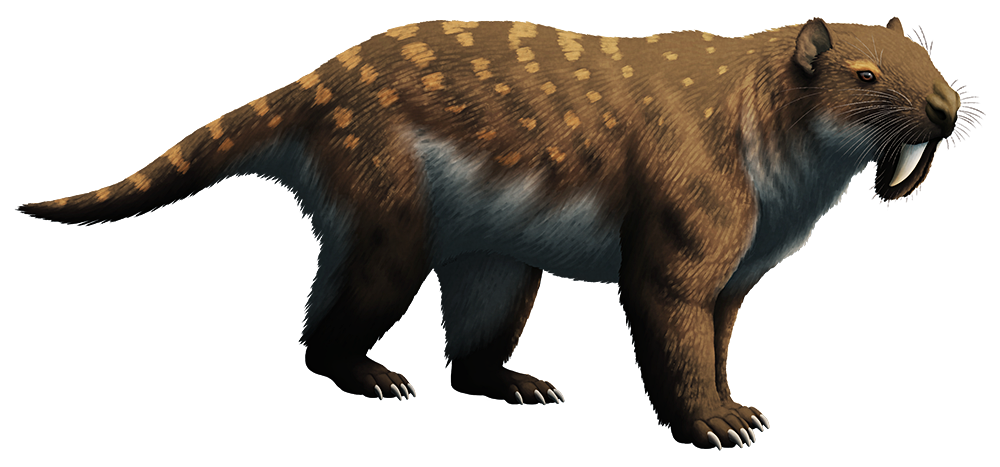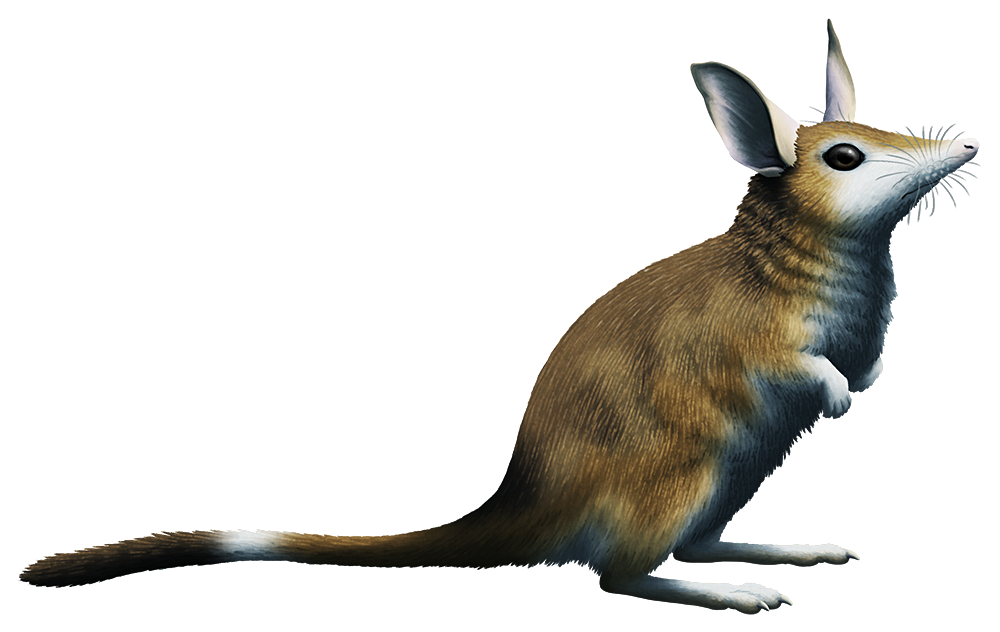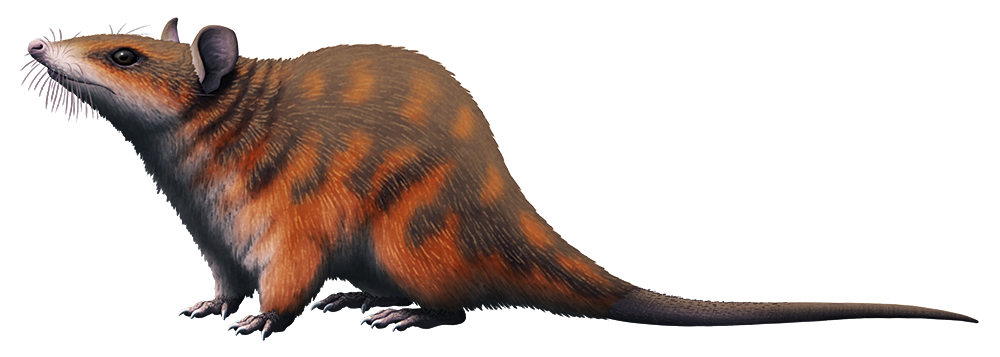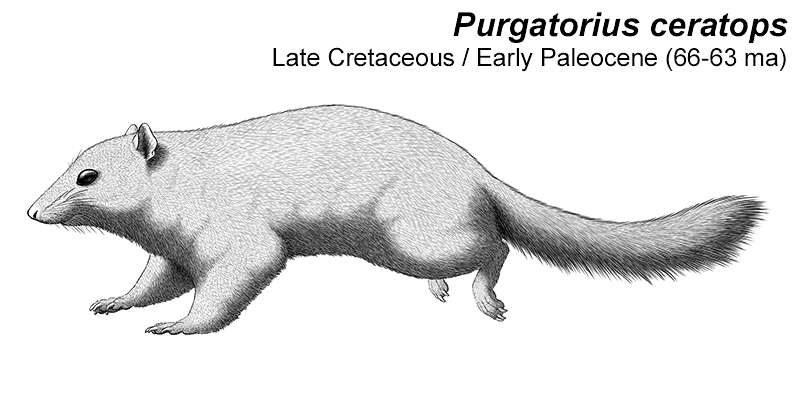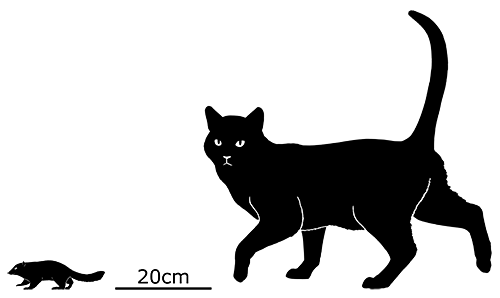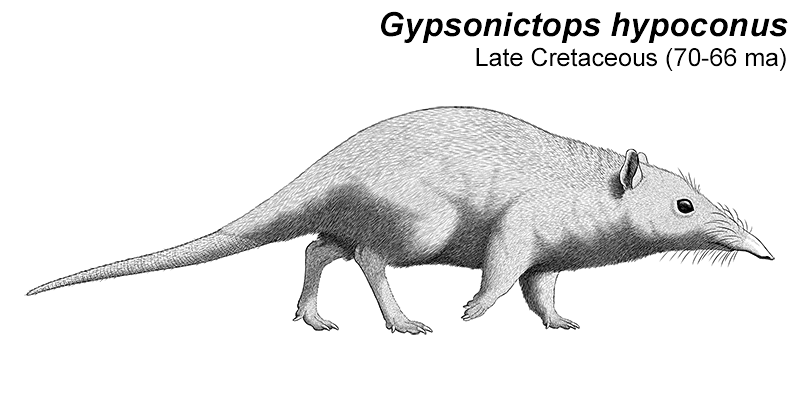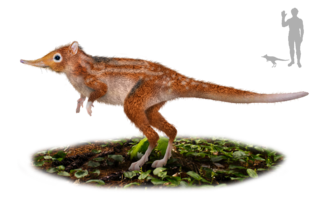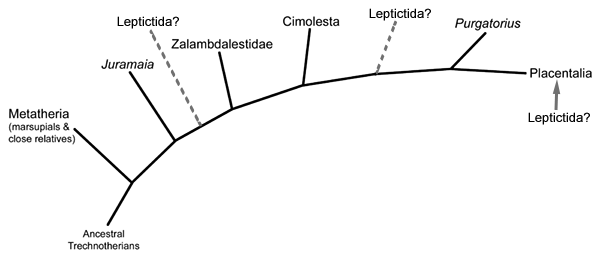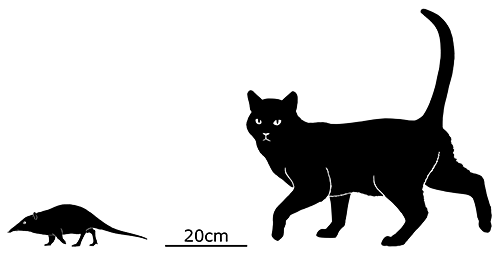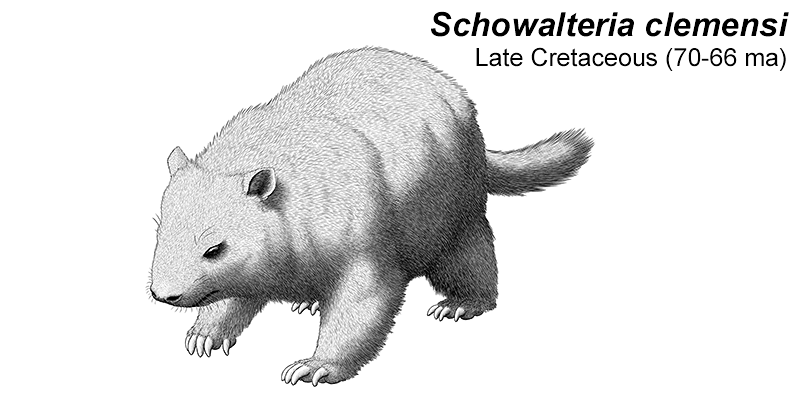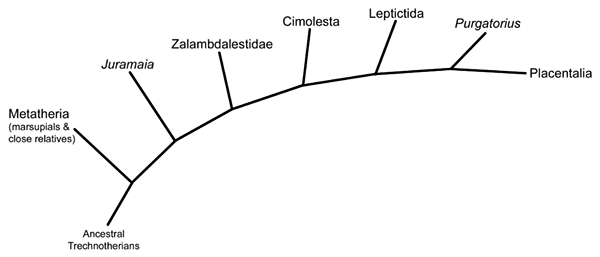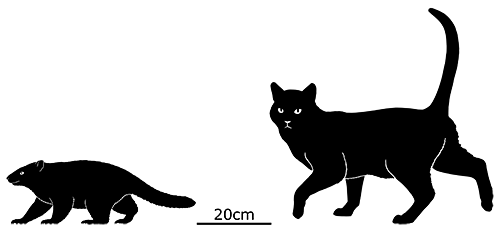While modern marsupials are native only to Australasia and the Americas, they’re part of a larger grouping of mammals known as metatherians that were once found around most of the world. Thought to have originated in Asia, perhaps as far back as the Late Jurassic (~160 mya), the ancestral metatherians spread to Europe and the Americas during the Cretaceous and gave rise to multiple different lineages, ranging from small sabertoothed carnivores to otter-like swimmers to the main mammalian predators of Cenozoic South America.
True marsupial fossils didn’t appear in the fossil record until the start of the Paleocene (~65 mya), but some of their closest evolutionary “cousins” – the herpetotheriids – originated a little earlier in the Late Cretaceous, around 70-66 million years ago.
Herpetotheriids were small opossum-like animals found in North America, Asia, Europe, and Africa. They were more terrestrial than the opossums they resembled, adapted for running on the ground rather than climbing, but were probably similarly opportunistic omnivores eating a wide variety of foods.
They survived through the end-Cretaceous extinction and seem to have actually been quite common in the northern continents for most of the Cenozoic. They also weren’t the only metatherians in those regions, living alongside another group called the peradectids which were true marsupials closely related to opossums.
In North America the native metatherians all went extinct sometime around the early Miocene (~20 mya) – although the continent would later be recolonized by opossums from South America during the Great American Interchange. Meanwhile the African herpetotheriids disappeared around the same time, but the European and Asian metatherians continued on into a little longer into the mid-Miocene.
Amphiperatherium frequens was one of the last known members of the herpetotheriids, living in Europe during the early-to-mid Miocene (~20-13 mya). It was about the size of a small rat, around 15-20cm long (6-8″), and seems to have mainly inhabited warm humid environments.
Although the disappearance of the northern metatherians has traditionally been blamed on them being out-competed by placental mammals, the fact that they survived alongside placentals just fine for over 45 million years suggests that something else pushed them over the brink. Their extinction may in fact be more linked to the ongoing drying and cooling climate trends in the latter half of the Cenozoic.
The herpetotheriid’s extinction seems to have happened soon after the Middle Miocene disruption, a sudden shift towards cooler temperatures that may have altered their local ecosystems too quickly for them to adapt. The peradectids hung on until at least 11 million years ago, with some of the last members known from Southeast Asia, but they may have likewise fallen victim to further episodes of global cooling towards the end of the Miocene and into the Pliocene.

